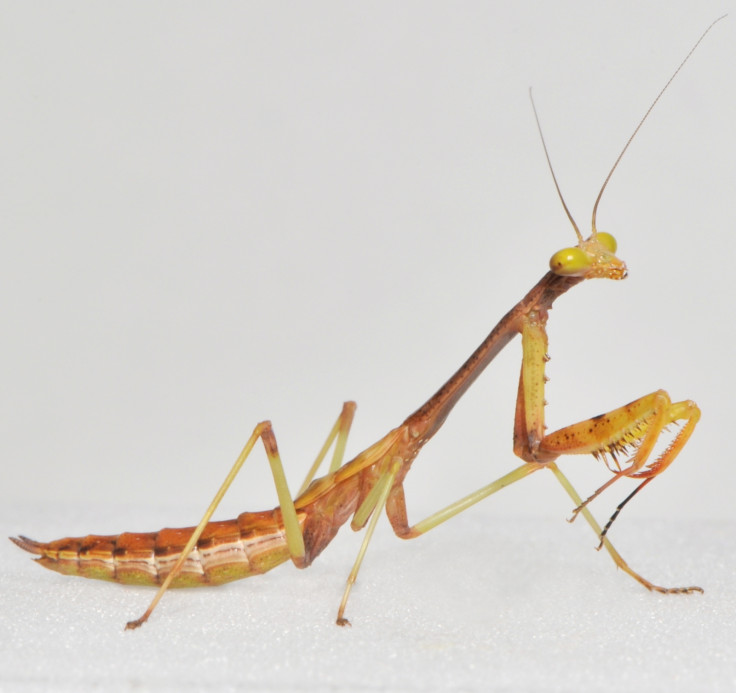Amazing video shows praying mantis jump in slow motion
A video has shown a wingless praying mantis jump in slow motion – and the footage is incredible.
From take-off to landing, the jump lasts just a tenth of a second, faster than the blink of an eye. Yet during that time, the creature's body rotates at the rate of about 2.5 times per second.
Yet their landing is extremely accurate – on target every time.
Malcolm Burrows of the University of Cambridge explained: "This is akin to asking an ice skater who is rotating at the same speed as these mantises to stop suddenly and accurately to face a specific direction."
Published in the Cell Press journal Current Biology, the researchers had previously noticed how odd their jumping behaviour was.

The scientists filmed the mantises jumping onto a thin black rod 381 times, examining their method.
The insects would sway their heads sideways, eyeing up the target, then rock their bodies back and curl up their abdomens, the tip pointing forwards. They then pushed from their legs to launch into the air, rotating their abdomen, front legs and hind legs independently in a specific sequence.
During the jump, the spin is transferred from one body segment to the next, which allows the body to stay level and on target.
They could not scare them into jumping by presenting a threatening stimulus. Instead, they offered them a target to jump towards – which they would do consistently and accurately.
Burrows said: "Maintaining stability so that the body does not rotate uncontrollably in mid-air is a difficult task. When the movement is rapid, as it is in a jump, and you don't have wings, then the task is even more difficult.

"Nevertheless, a praying mantis moves rapidly and controls the rotation of its body so that it lines up precisely with a target, and does all of this in less than 100 milliseconds."
To test the importance of the controlled spin, researchers glued segments of the abdomen together. They expected this would cause the mantis to spin out of control, but this did not happen. The insects still reached their target, but crashed into it rather than landing.
Researchers now plan to find out how the mantises' mid-air acrobatics reach such fast speeds: "We can see the mantis performs a scanning movement with its head before a jump. Is it predicting everything in advance or does it make corrections at lightning speed as it goes through the jump? We don't know the answer between these extreme possibilities," Burrows added.
© Copyright IBTimes 2025. All rights reserved.






















